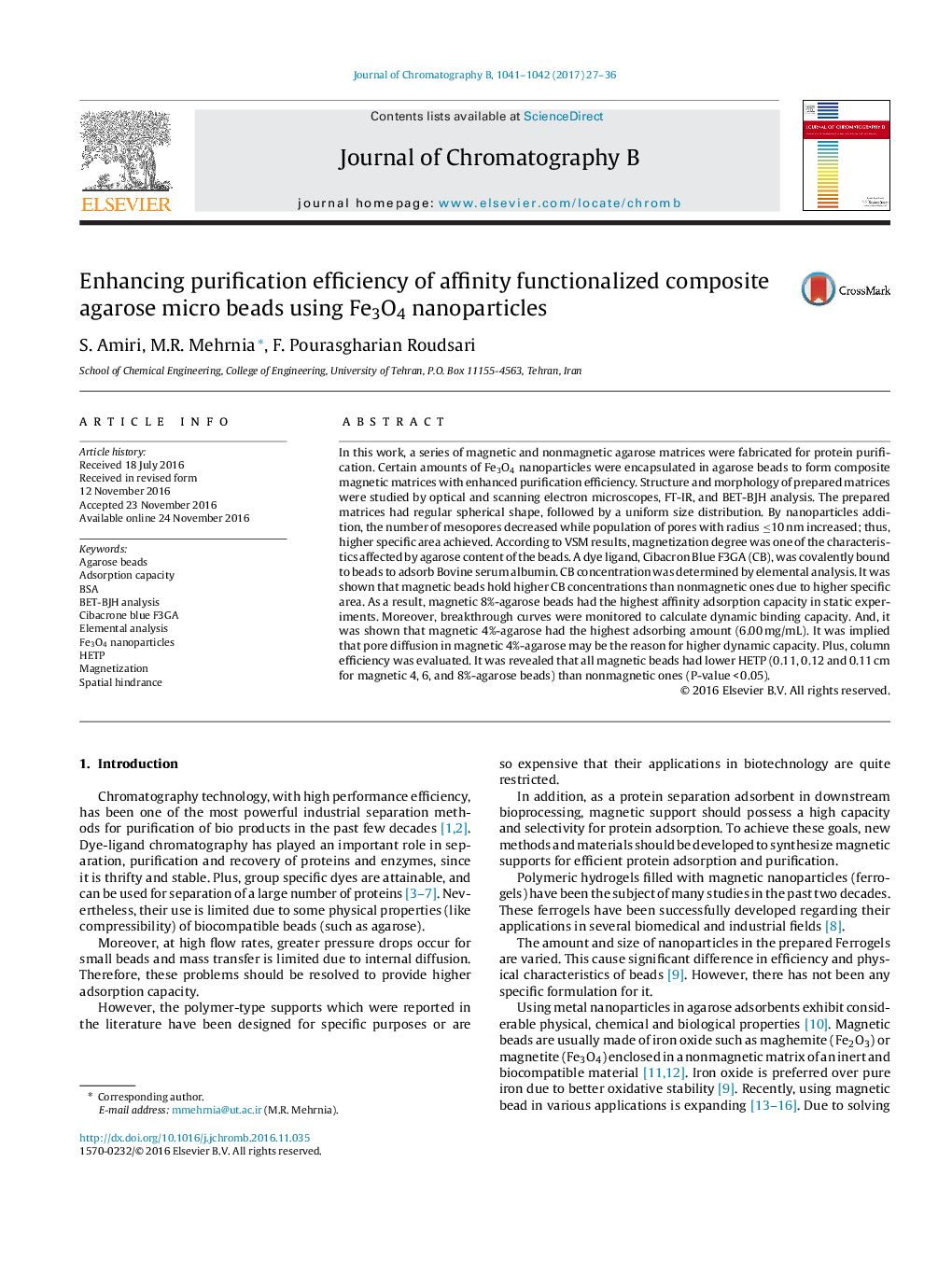| Article ID | Journal | Published Year | Pages | File Type |
|---|---|---|---|---|
| 5136505 | Journal of Chromatography B | 2017 | 10 Pages |
â¢Investigating effects of magnetic nanoparticles on adsorption properties of beads.â¢Specific surface area of magnetic beads is significantly more than nonmagnetic ones.â¢Cibacron Blue F3GA (CB) was used as affinity ligand.â¢CB density on magnetic beads is more than nonmagnetic ones.â¢Protein adsorption and separation properties were investigated.â¢The static and dynamic adsorption capacity was influenced by magnetic nanoparticles.
In this work, a series of magnetic and nonmagnetic agarose matrices were fabricated for protein purification. Certain amounts of Fe3O4 nanoparticles were encapsulated in agarose beads to form composite magnetic matrices with enhanced purification efficiency. Structure and morphology of prepared matrices were studied by optical and scanning electron microscopes, FT-IR, and BET-BJH analysis. The prepared matrices had regular spherical shape, followed by a uniform size distribution. By nanoparticles addition, the number of mesopores decreased while population of pores with radius â¤10 nm increased; thus, higher specific area achieved. According to VSM results, magnetization degree was one of the characteristics affected by agarose content of the beads. A dye ligand, Cibacron Blue F3GA (CB), was covalently bound to beads to adsorb Bovine serum albumin. CB concentration was determined by elemental analysis. It was shown that magnetic beads hold higher CB concentrations than nonmagnetic ones due to higher specific area. As a result, magnetic 8%-agarose beads had the highest affinity adsorption capacity in static experiments. Moreover, breakthrough curves were monitored to calculate dynamic binding capacity. And, it was shown that magnetic 4%-agarose had the highest adsorbing amount (6.00 mg/mL). It was implied that pore diffusion in magnetic 4%-agarose may be the reason for higher dynamic capacity. Plus, column efficiency was evaluated. It was revealed that all magnetic beads had lower HETP (0.11, 0.12 and 0.11 cm for magnetic 4, 6, and 8%-agarose beads) than nonmagnetic ones (P-value < 0.05).
